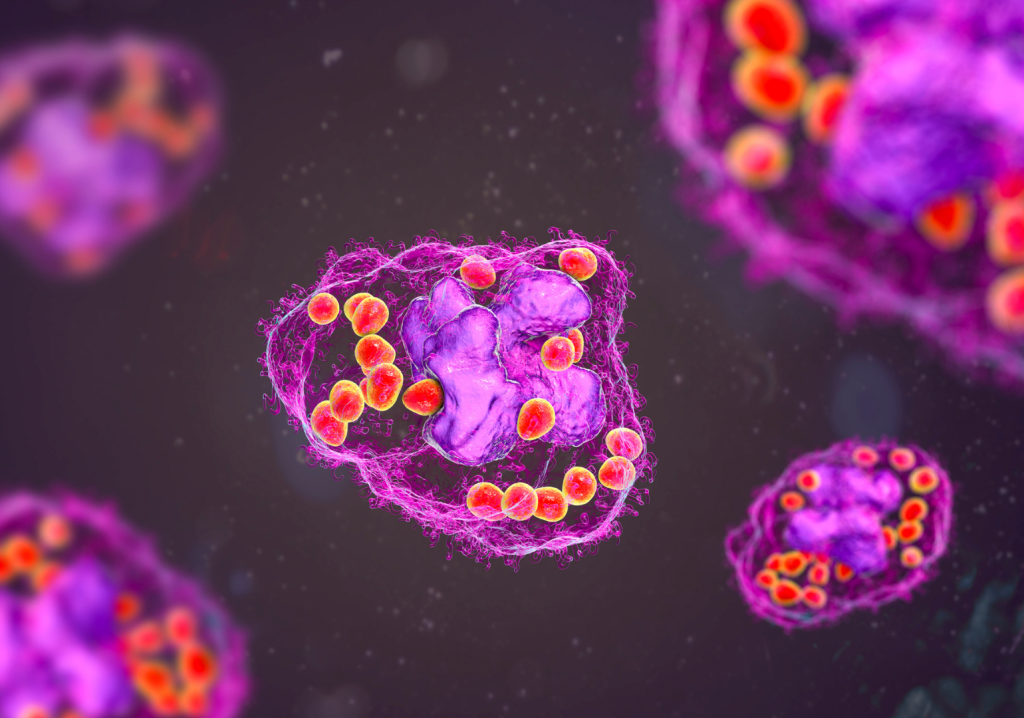Research from two UNSW engineers aims to address a pressing public health burden: fungal infections.
Each year, approximately 6.5 million people are affected by invasive fungal infections, contributing to more than 3.75 million deaths annually – a staggering 2.5 million of which can be attributed as a direct result of the infection.
UNSW researchers Dr Megan Lenardon and Professor Cyrille Boyer are acutely aware of the demand for new solutions, especially in light of the challenge posed by increasing antifungal resistance and the limited availability of effective antifungal medications.
Growing urgency
A recent surge in vulnerable populations, particularly in the aftermath of the COVID-19 pandemic, has created “even more susceptible patients”, according to Lenardon.
“Fungal infections are largely opportunistic,” she told create. “They don’t affect healthy people. The more immunosuppressed you are, the more susceptible you are to fungal diseases.”
This spike in susceptibility, combined with growing drug resistance, has created an urgent need for new treatments.
”For really serious fungal infections there are probably only three or four classes of drugs available, one of which is Amphotericin B,” Lenardon explained. “These drugs work beautifully, but are quite toxic to humans.
“We also have other antifungal drugs that try to stop ergosterol from being synthesised. Unfortunately, however, we’re seeing high resistance to those drugs, mostly because they are used in agriculture against plant pathogens.
“Echinocandins are another good option as they target the fungal cell walls. But again, we’re starting to see resistance emerging to those, and so if we want to be able to continue to treat fungal infections, we absolutely need a better solution.”
Biological challenges
Because human cells and fungal cells are similar, fungal infections can be hard to treat.
“They’re both eukaryotic, whereas bacteria are prokaryotic, making bacterial infections easier to treat,” Lenardon explained.
“When we try to find a drug that can kill a microbe, we look for differences between the microbe and humans, so we kill the microbial cell and not human cells.
“Cyrille came up with the idea for these polymers in biological systems. The project we embarked upon together was to synthesise polymers that have antifungal activity rather than just antibacterial activity.”
UNSW students are the glue that binds their unique expertise together.
“They learn how to do the chemistry side of things with Cyrille, and then I teach them how to work in the microbiology lab with the fungal pathogens in a safe way,” Lenardon said.
“Students test to see which sequence kills the fungus better, while also engaging in continuous testing to ensure that it doesn’t harm mammalian cells. It’s vital that you have antifungal activity, but without the negative effects on humans.”
Global impact
The impact of synthetic polymers is set to be far-reaching, with researchers such as Lenardon and Boyer aiming to be at the forefront of potentially life-saving innovations.
“Another aim in medical mycology is to make treatments accessible not just in rich countries, but also in places like sub-Saharan Africa, where there is a persistent problem with HIV/AIDS and cryptococcal diseases,” Lenardon said.
“I think these polymers could be much cheaper to manufacture, and simpler to make than some existing antifungals.”
Boyer touched on the potential for their research to eventually move beyond medical spheres.
“Polymers may be effective as an antifungal treatment in agriculture, leveraging not only their cost-effectiveness but also their capacity for quick application to avoid the fungi from adapting.”
